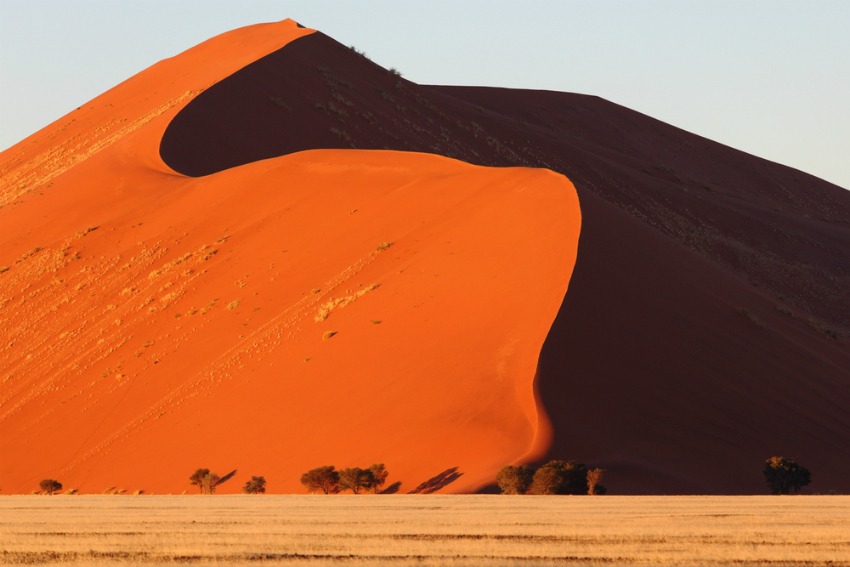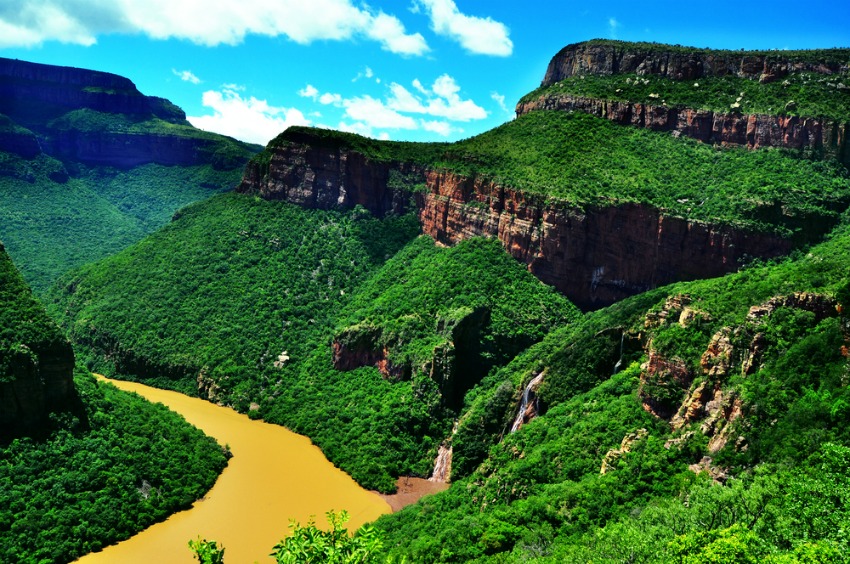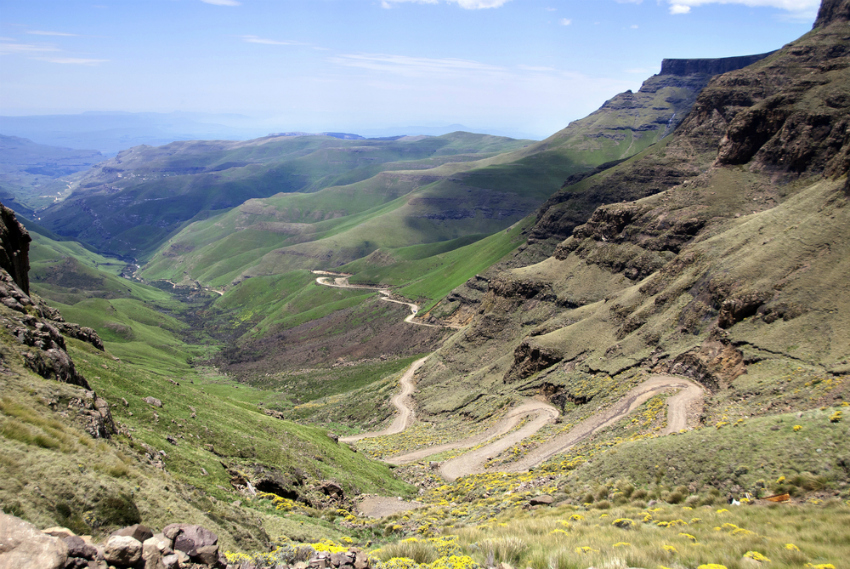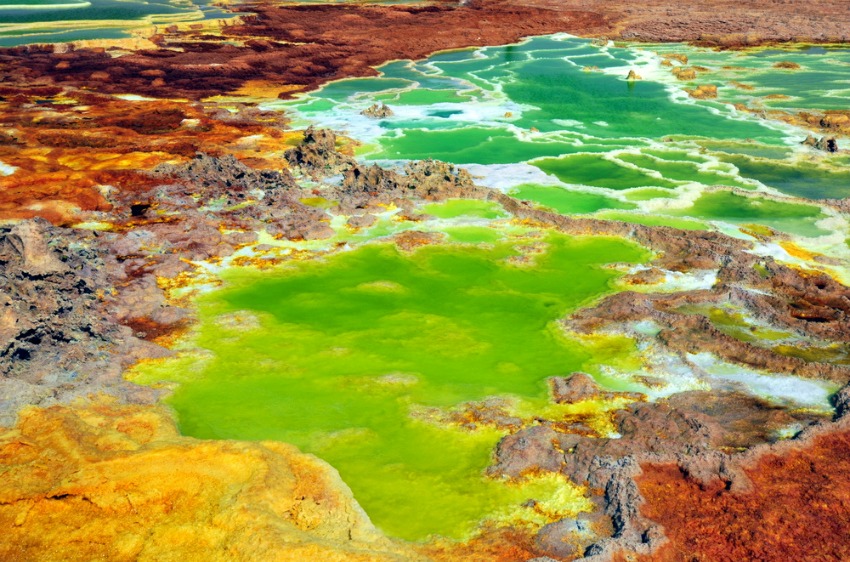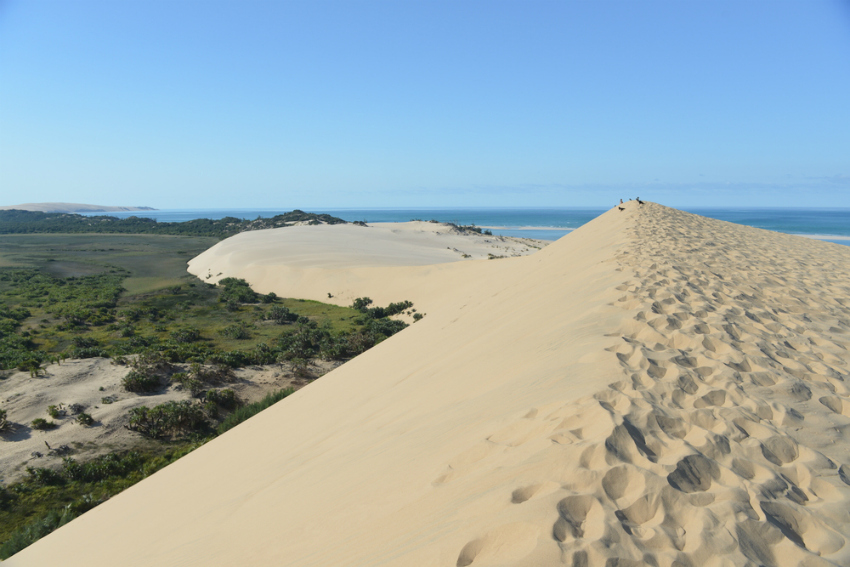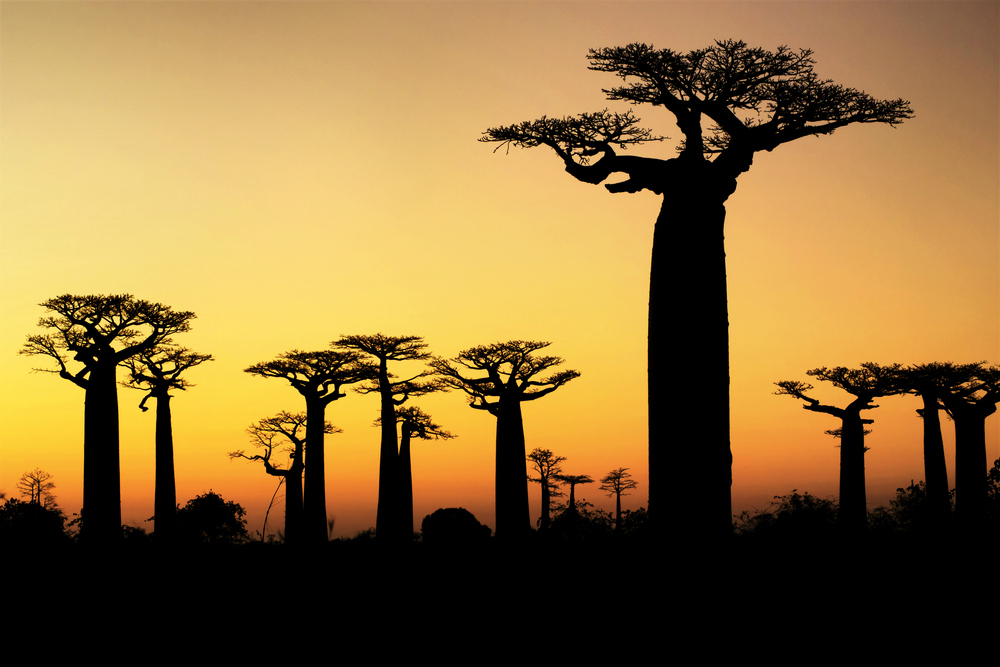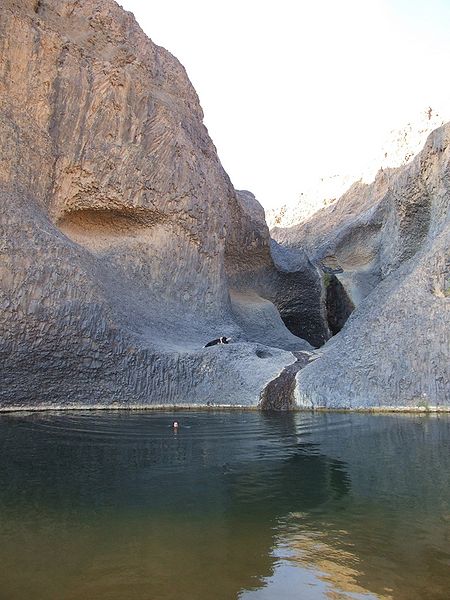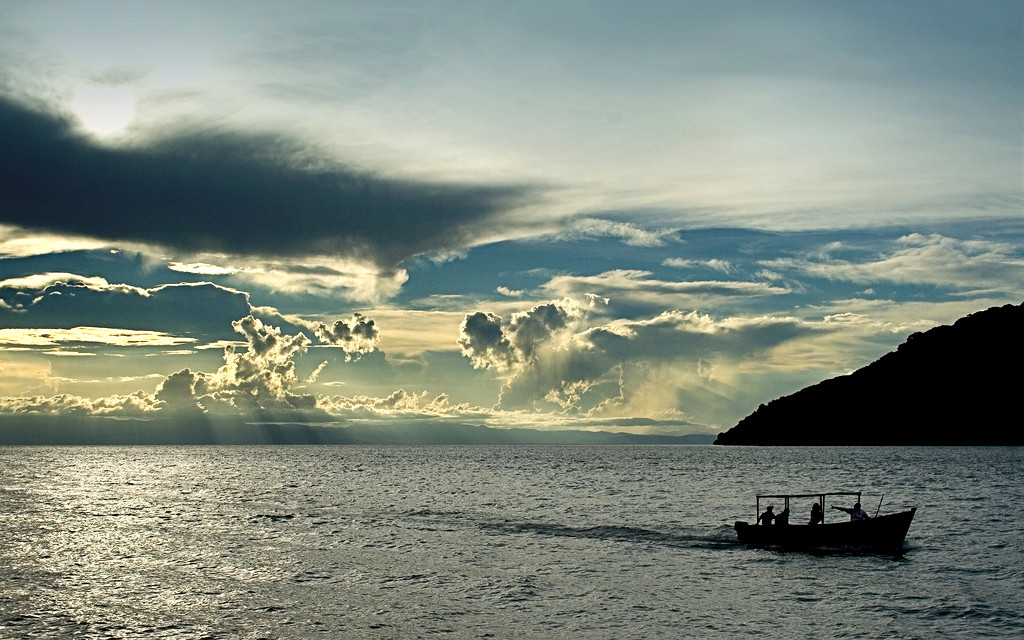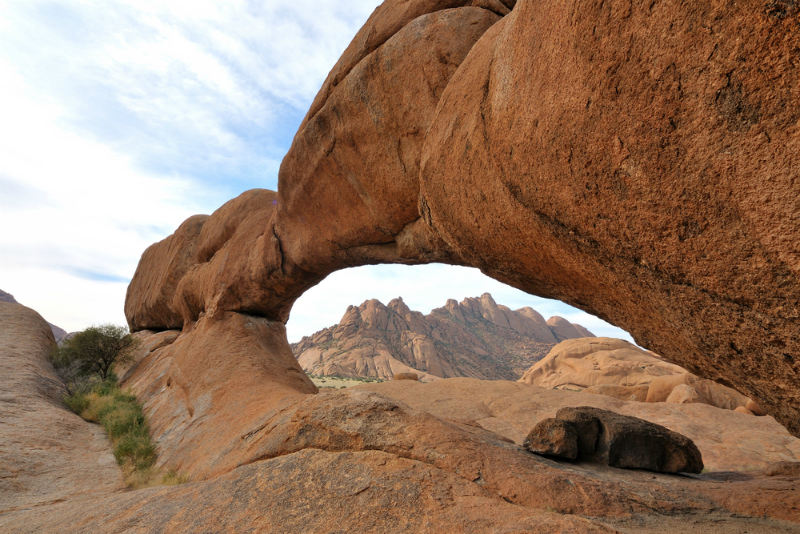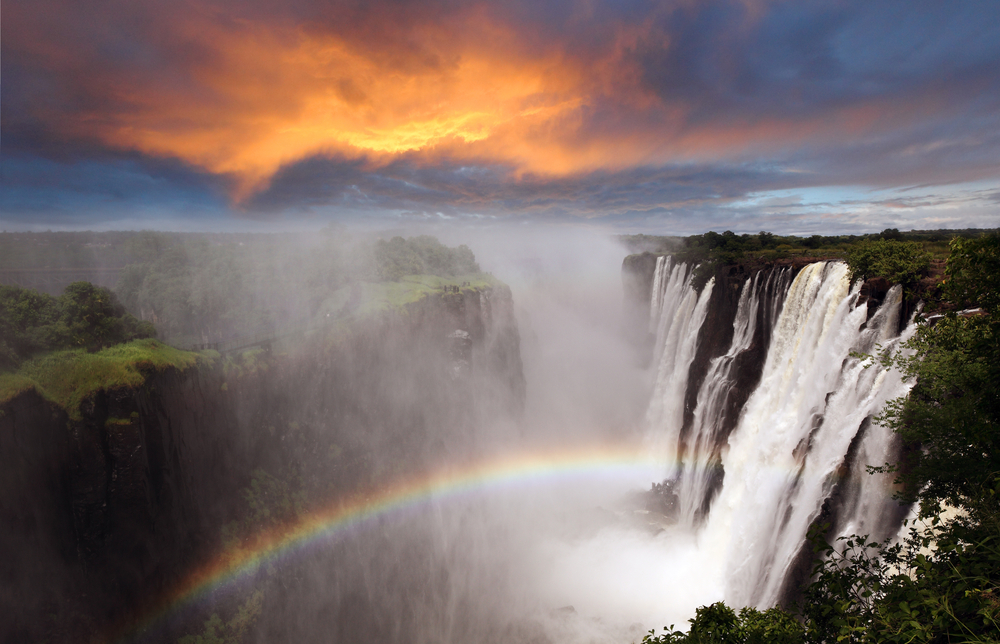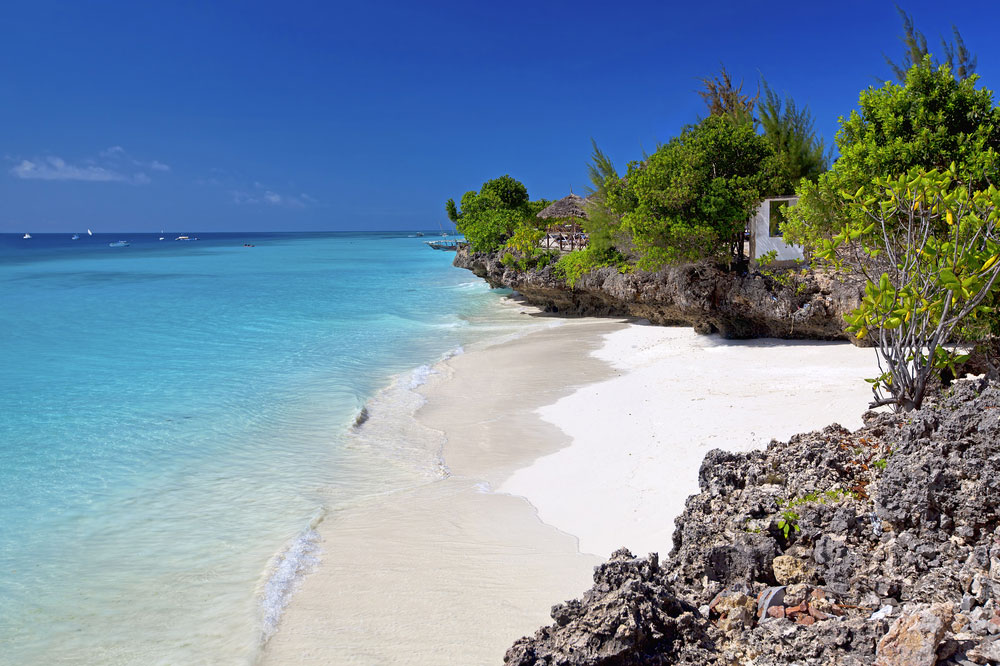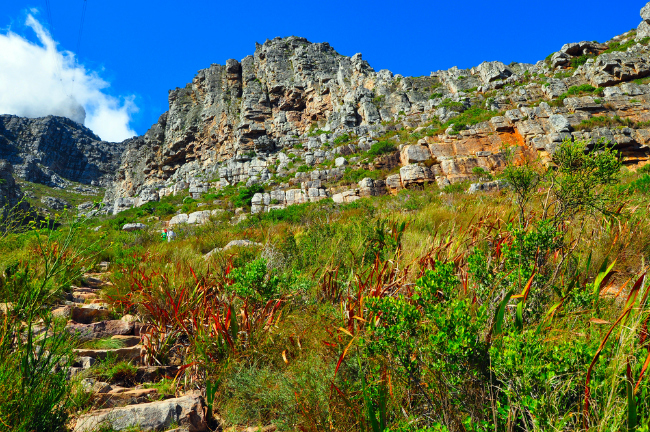Considering that it’s one of the most diverse, exotic, and unique continents on Earth, it’s pretty difficult to pick out the most beautiful places in Africa. From deserts to oceans, to mountains to craters, the geography in Africa is some of the most breathtaking in the world. So in the interest of fairness, this list attempts to spread out the honors among countries, and not just re-iterate all of the Wonders of the World. Essentially, what we have here is an entirely arbitrary collection of some seriously beautiful places that you should do your absolute best to get to one day.
This article originally appeared on AFKInsider.com.
1) Sossusvlei Dunes, Namibia
No, it’s not your Windows ’98 background causing that otherworldly orange hue. The Sossusvlei Dunes in Namibia are the result of material from the Orange River passing through to the Atlantic, creating a salt and clay pan drainage basin by gorgeous red sand. Once you’ve taken your fill of pictures of the dunes themselves, hike up to the top for views of the eerie surrounding area, consisting of ghostly stretches of white clay and skeletal trees. Conflicting sources define Sossusvlei as meaning “the gathering place of water” or “dead-end marsh.” Either way you should bring your own water — it’s definitely a BYO kind of spot.
2) Blyde River Canyon, South Africa
Forming the northern part of the Drakensberg escarpment in South Africa, the Blyde River Canyon consists of mostly red sandstone and lush subtropical foliage and runs for more than 16 miles. It is one of the largest canyons on Earth, and is home to some of the deepest cliffs and drop-offs – so keep your eyes peeled as you hike through it! If you’re feeling adventurous, head to the Three Rondavels.
3) Nyiragongo Volcano, Democratic Republic of Congo
Beautiful doesn’t always have to mean peaceful, or even safe, and the Nyiragongo Volcano in the Virunga National Park in Eastern Democratic Republic of Congo proves this. It is one of Africa’s most active volcanoes, most recently erupting in 2002 and resulting in the deaths of nearly 150 people and the evacuation of over half a million. More than two kilometers wide, it contains a fascinating lava lake that has been the most voluminous in recent history, as well as two distinct lava benches within the crater walls. In case it doesn’t go without saying, the Nyiragongo Volcano is probably best observed from a distance.
4) Sani Pass, Lesotho
Sani Pass is the route that connects the KwaZulu-Natal province in South Africa with Lesotho, and offers breathtaking views as it winds between the two countries. It is extremely dangerous to traverse. Its steep gradients and poor traction have led numerous vehicles to fail in their attempts. South Africa enforces strict prohibitions on the types of vehicles that are allowed through its immigration checkpoint on its side of the border; only sturdy 4x4s are allowed to move forward), but Lesotho is a bit more relaxed, allowing pretty much anything with wheels through. Sure, it could be the last thing you do, but what a way to go!
5) Danakil Depression, Ethiopia
This unique geologic formation at the intersection of Ethiopia and Eritrea is one of the hottest, driest and starkest places on earth. The craggy rocks, mineral pools and vast salt deposits (left behind when ancient seas evaporated) combine to create an eerie, otherworldly landscape that resembles an above-water coral reef. The area is very hard to get to, but for the intrepid, a few companies offer 4×4 tours to certain sections.
6) Bazaruto Island, Mozambique
A gorgeous sandy island that’s part of the Bazaruto archipelago, Bazaruto Island is just now being discovered by the wider world. Pristine is an appropriate word to describe the island, as you won’t find any cars, pollution or distractions — just fine white sand, perfectly clear water and offshore reefs which are perfect for sunning, snorkeling, or diving.
7) Avenue of the Baobabs, Madagascar
In Madagascar’s wild west you’ll find the famed “Avenue de Baobab,” where two dozen trees line the dirt road between Morondava and Belon’i Tsiribihina. Some of these 90-foot-high giants are thought to be as much 800 years old. A photographer’s dream, the avenue is most beautiful at sunset.
8) Timia Oasis, Niger
In wandering the seemingly endless sand dunes of the Sahara, it seems impossible to imagine such a peaceful and refreshing sight such as the Timia Oasis. Around it sprouted a small town and a Tuareg community of almost 14,000 people. The area sustains fruit trees, a virtually unheard-of commodity in the middle of a desert. Amid arguably the least hospitable terrain, you’ll find a network of lush gardens with oranges and pomegranates, date palms, and a variety of other garden produce. The Tuareg have been able to capitalize on the draw of the oasis, allowing tourists to pick the fruit for a fee and selling the goods of their gardens.
9) Lake Malawi, Malawi
David Livingstone became the first European to set eyes on Lake Malawi, a huge body of fresh water, with beaches of sand. Malawi Lake is shared by three countries, and is known for being extraordinarily deep – 2300 ft or 700m, a byproduct of its Great Rift heritage. The lake is the third largest in all of Africa, and it is also known for its colourful cichlids, with over 1000 species of cichlid recorded in the lake. The lake gained UNESCO Heritage Site status. It was nicknamed Calendar Lake, as in miles it shows the measures 365 (number of days in a year) X 52 (number of weeks in a year). The lake’s clear, mineral-rich waters provide excellent freshwater diving.
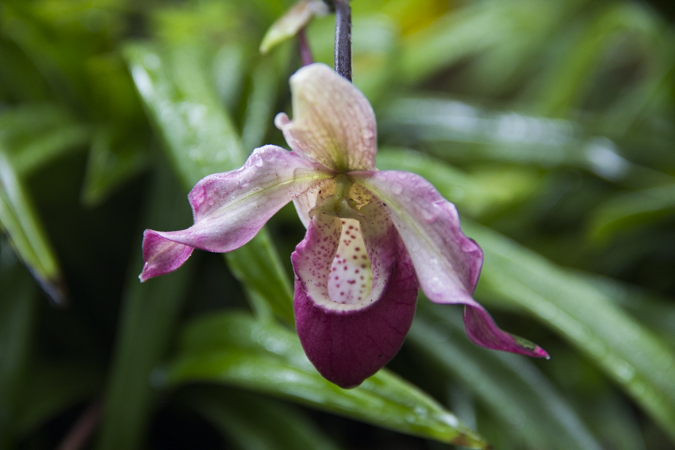
Photo by Marinda Louw-Coetzee
10) Reunion
A small island situated off the coast of Madagascar, Reunion is wondrously verdant. It’s most amazing sight is perhaps the Trou de Fer, which was only discovered in 1989. It is a huge gorge about a thousand foot deep, looking like something directly out of Jurassic Park.
11) Spitzkoppe, Namibia
Located in the Namib Desert, Spitzkoppe is a group of ancient (700 million years) granite mountains that jut out of the otherwise flat landscape, and are sometimes called “Namibia’s Matterhorn.” Today it’s popular with rock climbers but the amazing rock colors, which change with the sun during the day, are also a huge draw for photographers. The sunsets and sunrises are spectacular, as the color of the landscape takes on orange and red hues.
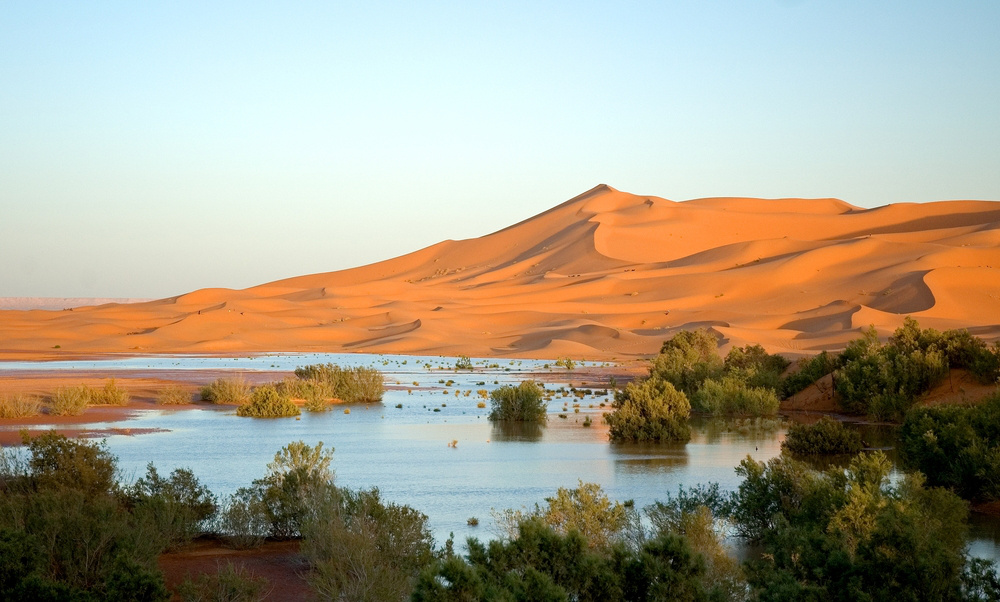
Shutterstock
12) Sahara Desert, Morocco
Spread across a huge swathe of Africa, the Sahara Desert is at once formidable and breath-taking in its beauty. One place to experience this etheral and surreal beauty is in Morocco, where you can visit the Erg Chebbi Dunes, just near the town of Merzouga. The dunes are an amazing 50 kilometers in length and five kilometers wide, and can reach up to 350 meters in height. Sculpted into beautiful patterns by the unrelenting winds, this is desert architecture at its finest. As the sun moves across the sky, you’ll see the dunes change color, from pale cream to deep oranges and reds. Plus, at night you can have the ultimate view of the heavens, totally free from light pollution. Legend has it that the dunes were a punishment sent by God to the people of Merzouga who refused hospitality to a poor woman and her son.
13) Victoria Falls, Zimbabwe & Zambia
‘Mosi-oa-Tunya’, or ‘The Smoke that Thunders’, Victoria Falls is a grand and awe-inspiring sight, with a width of nearly two kilometers. Listed as a World Heritage Site, the spray and mist from the falls can be seen for about 30 miles. During the rainy season, the falls are in full flood (February & March), with as much as 540 million cubic meters of water falling over the edge every single minute. The falls themselves can be obscured with so much water and mist, so it is best to avoid visiting in these months. During the full moon, you can see a ‘moonbow’, or lunar rainbow. These are much fainter than their daytime versions, but can be photographed with a long exposure.
14) Zanzibar, Tanzania
Stone Town has its amazing Arab architecture, but the small and mesmerizing island of Zanzibar is possibly best known for its amazing white sand beaches. Beautifully idyllic, the danger is that once you behold them, coupled with the crystal clear waters, you may never want to leave.
15) Table Mountain, South Africa
Said to be one of the oldest mountains on the planet, Table Mountain is synonymous with Cape Town and an iconic sight in its own right. Seeing Table Mountain shrouded in fog with only the top visible is a truly awe-inspiring sight. But best yet is the view down to the rugged coastline below. The mountain is home to an amazing amount of plantlife, with more plant species recorded than in the entirety of the United Kingdom, and hundreds that exist no where else on earth. And, as if you needed more, you can see the rock hyraxes frolick as well. There are walking trails up to the top, or you can travel in relaxed style on the cable car, and soak up the amazing views.
Karen Elowitt contributed to this article.
Want to discover the finer side of Africa? Sign up for our weekly newsletter.
